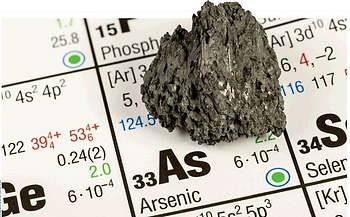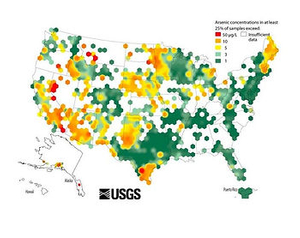What is Arsenic?
Arsenic is a metalloid element that is found naturally in rocks, soil, and plants, and is extremely toxic to humans in most of it is forms.
Ingestion of arsenic can cause headaches, drowsiness, diarrhea and vomiting, and discoloration of the skin and fingernails. Over time, chronic arsenic exposure can lead to severe stomach pain, numbness in the extremities, convulsions, paralysis, and blindness.
Arsenic can get into drinking water through natural deposits in the ground that eventually contaminate aquifers and wells. It can also be released into the environment through careless use of agricultural fertilizers and pesticides, and coal burning, mining, and smelting operations.


